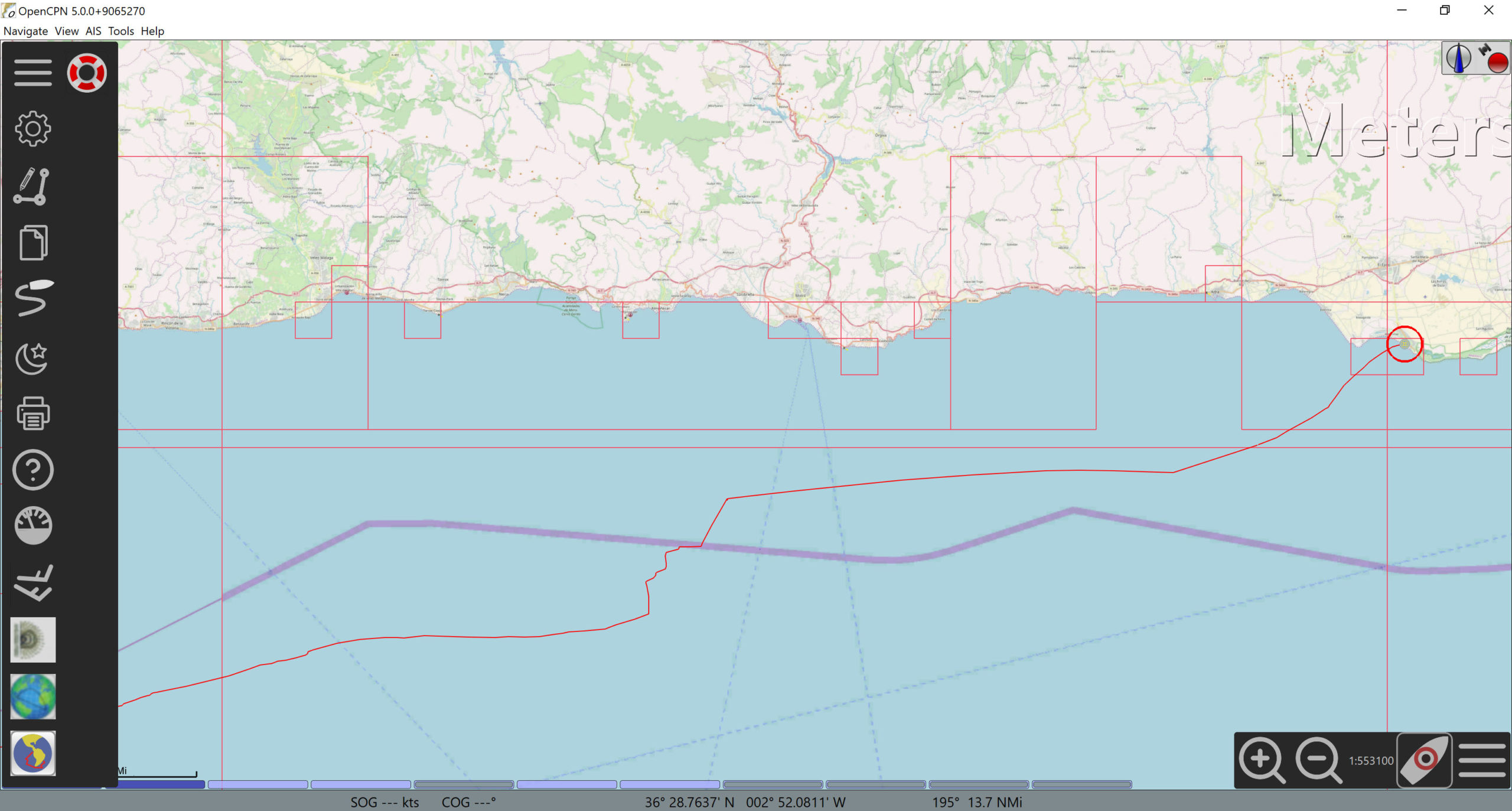REYKJA carries AIS, Automatic Identification System. A transponder sends the data of my position. Vice versa, I see the positions of other ships, their names, speed, size, and much more. If I collide in the near future, the AIS will buzz poisonously, and tells me when and where it will be. This has advantages – but not only. Big brother is watching.
Out of the rules
A ship with AIS becomes a glassy object. Anyone can see it: Not only a vessel on collision course, but also every potential pirate, every supervisory authority, every customs office. A website like www.marinetraffic.com, publicly accessible on the Internet, shows my position almost in real time. Whoever presses the right button even discovers my course of the last three days.
The downside? For example:
I am leaving Lagos, Portugal. Routinely I check border requirements for Spain and find out that since three days you have to present a negative corona test, not older than 72 hours. If you enter Spain without this test, you could be fined up to 6000 Euros. Do I have to turn back now? Where can I find a test facility in Lagos? When does it have the results? What does it cost? I decide to sail around Spain.
A few hundred nautical miles later it becomes clear that I do have to moor in Spain. My spinnaker boom is broken. What now, without a test? Cheating is useless. The AIS system tells every marina that Lagos, Portugal, was my last port. With trembling knees I am honest at check-in – and lucky. There is no question about the test. It would have been older than 72 hours anyway.
Out of the blue
Even stranger things happened the night before. A single sailor has to sleep from time to time. According to International Regulations for Preventing Colitions at Sea, this is not actually intended. Every ship “shall at all times keep a proper look-out by sight and hearing …”, as rule No. 5 goes. I interpret this to mean that I give a look at the AIS: No other ship by far and wide. I set the alarm clock and go to sleep for 30 minutes.
When I wake up, there still is no other ship by far and wide, but my autopilot has run from the wind. REYKJAS course has turned ninety degrees. On the electronic sea chart, the red course line looks like a drunken drivers track. I correct wind vane and course. Then out of the blue, the Spanish coast control radioes for the “Sailing Yacht Reykja”. Mind you: It is night at half past one. She has a strange request. I should go to a position nearby and see if I find anything conspicuous there.
So obediently I furl my sail, start the engine, drive twenty minutes in the wrong direction and find at the indicated place – nothing. Except a lonely dolphin. I inform the coast control. They thank me warmly and wish me a good night.
Should I really believe that there was something wrong at this place? Or had a bored coast control watched their AIS system and found my course too strange? And decided to check if someone might be sleeping out there?

